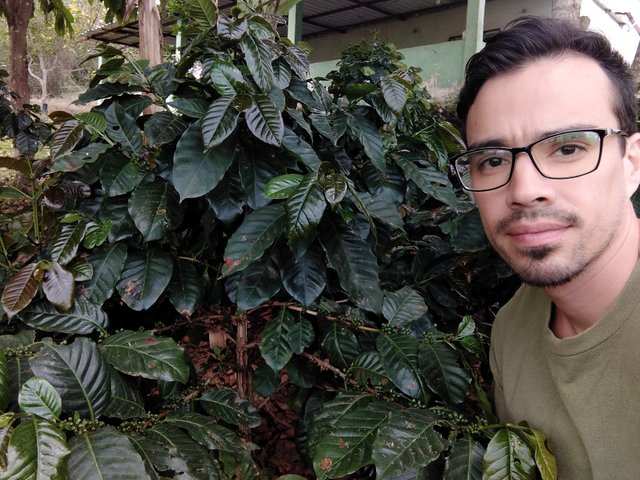Business Activity | @hacienda4dcoffee | We visited our farm and made some coffee sprouts!
Steemit Coffee Lovers today we want to write to you about the last trip we made to our coffee farm. As we mentioned in the presentation post, we are a brand that roasts, grinds and distributes rich coffee in grocery markets, but we also have our own plantation, where every year we strive to carry out all the agronomic processes in order to obtain a very high coffee quality, which differs from the rest of the coffees in the area.
But did you know that? Each cup of coffee originates many years ago, when an agricultural producer like us, gives special treatment to a seed, which months later will become a seedling and years later it will be an adult plant that blooms, bears fruit and then it is harvested to transform it into rich and aromatic coffee. Well, today we will show you some images of this initial process.
Like many of the coffee producers in our area, we are also in the wave of renewing the plantations, for varieties of coffee resistant to pests and diseases, in addition, that are more productive. That is why today we will show you a step by step of a germinator that we carry out in this visit to Hacienda 4D, this time, to make this germinator we use two kilograms of Castillo variety seeds, a variety of coffee plants that adapt very well to the conditions and altitude of our area (between 1100 and 1350 meters above sea level and average temperature in the day of 24 ° C and at night of 14 ° C).

With this amount of seeds, we will obtain an approximate of 6000 coffee plants, which is a good amount for one hectare of land.

To make the germinator we will use coarse sand that we obtained from a river that passes through the center of the farm, to this sand we place the antagonist fungus Trichoderma harzianum to disinfect it, we also hydrate the seed one day before watering it in the germinator.
A few minutes before starting the construction of the germinator we hydrate the sand and for this activity one of the girls who works on the farm helps us. Then we level the sand and spread the seeds trying to be well distributed and not one on top of the other to avoid root problems when starting germination.

Also, I comment that our farm works under the vision of agroecology and permaculture, trying to be conservative, ecological and friendly with the environment where we develop agricultural activity, therefore, not to use materials such as plastics and others for the processes. Nor do we use chemical agro-inputs for the processes, only products allowed in organic agriculture and in most cases products made with raw materials obtained on the farm, such as fertilizers, fungicides, insecticides among others. This is why the visual result of our germinator is very primitive and not at all technical. There are farms where the banana leaves are replaced by polyshadow plastic meshes, these filter the light and provide protection, but they are expensive and their manufacturing process is not environmentally friendly, so we do not use them.

From this moment, after about 35 days, the seed germination process begins, and the first centimeters of the root can be observed. After approximately 60 days, the so-called phosphorites are observed, which will then become chapolas no later than 90 days and this will be the maximum time to carry out the transplant of the germinator to the nursery bag. The chapola state is one where the two completely open cotyledons are observed, with their characteristic green coloration. A few days later, the first pair of real leaves will begin to be produced, which will give way a few months later to the first horizontal branches and the architecture of the plant will begin to be noticed, like the ones we see in the image.


Also, we want to show the state of two germinators that we had elaborated some time ago, one in the chapolas state, this one with Monte Claro variety coffee plants and another one with phosphorite state, this one with the Colombia coffee variety. These will be transplanted in a few weeks to the nursery bags, and then they will be transplanted approximately 4 months later.




We also take the opportunity to show some of the oldest adult plants that are very close to the place where we make the germinators. These beautiful Catimor variety coffee plants were planted at the Hacienda approximately 2 years ago. They are currently emitting their first production and in the image you can see the small fruits on their branches, which are now green, but which will begin the ripening phase in approximately 3 months. This makes us very happy!

| Business name: | Hacienda 4D Coffee |
|---|---|
| Owner's name: | @daniellozada |
| Business address: | Barcelona, Anzoategui, Venezuela. |
| About us: | https://steemit.com/hive-153176/@hacienda4dcoffee/presentation-of-hacienda-4d-coffee-s-in-steemit-we-now-accept-payments-in-steem-and-sbd |
We take this opportunity to send a greeting to: @steemcoffeeshop @arie.steem @oscarcc89
And the friend of the house @cindycam who motivated us to participate in Steemit, thank you!.



Very good that companies are self-sustaining, and that they want to grow more and more. I hope they have given us the best coffee with the best quality.
What a great work they have been developing, it is truly extraordinary to see that young people strive to improve each area of the planting. Congratulations, it's a pleasure that you share this exclusive content with us!
Excellent! we hope to take some of the fruits of that coffee in a few years!